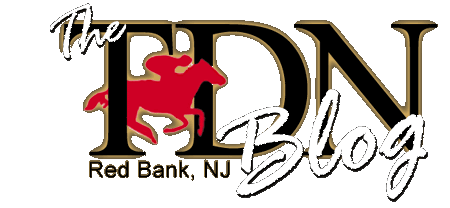--by Kelsey Riley
While reading Bill Finley’s Op/Ed titled “NYRA Is For Sale.
But Who Would Want It?” In Friday’s TDN, I admittedly felt chills run down my
spine when I read the following excerpt:
“There’s every reason to believe that this anti-racing
governor who keeps hoovering cash from casino companies will find a way to cut
racing out of the equation, whether that means taking VLT revenue away from the
track operator or from purses or from both. State Comptroller Thomas DiNapoli
issued what was a scary threat back in August when releasing an audit of VLT
racino revenues. ‘We are unable to determine whether the millions of dollars
that pay for increased purses (prize money), rather than for education, are
having their intended effect.’”
(for the full Op/Ed column, click here).
For anyone who has kept a close eye on the racing business
over the last few months, and years, there are some keys phrases here that are
all too familiar.
Last year while interning at the TDN, I wrote a magazine
feature on what was then the future of New York racing: the Aqueduct racino
(click here to read). I have to admit upon starting the project I wasn’t fully
convinced that a racino would solve all the State’s woes. Therefore, I asked
administrators the hard questions: what would stop the government from tweaking
the agreement and encroaching on NYRA’s share of the VLT revenues, such as we
had already seen in Pennsylvania and Indiana at the time? I was assured by a
number of parties that the NYRA racetracks were different from most others,
because NYRA is a not-for-profit organization, and its arrangement with the
State created “layers of legislation” that would make it difficult for the
government to alter the agreed upon distribution of the VLT revenues. So long
as Aqueduct, Belmont, and Saratoga were being run by NYRA, the VLT revenues
would be safe. I was told that NYRA and Genting had modeled the racino after
Woodbine’s (also run by a not-for-profit), so what could go wrong?
As we have learned this year from Woodbine, a lot can go
wrong, and very quickly. In early March, the Ontario government announced they
were considering pulling racing’s 20% share of the revenues from the Slots at
Racetracks agreement, which had fuelled purses and breeders awards at the
province’s Thoroughbred and Standardbred tracks for more than 15 years. Just a
few weeks later, the government officially ended the Slots at Racetracks
program, throwing the industry (and particularly the breeding sector) into
turmoil. Stallion nominations were cancelled left, right and center, a handful
of stallions have since been exported from the province, and the Ontario-bred
yearling sale earlier this month experienced significant declines. What is
more, it has been truly disheartening how the government has fabricated outright
lies to justify its behavior to the public: they have described the racetracks’
cut of the slots revenues ($345 million a year) as a “subsidy” to rich
racetrack owners, and they have depicted these “rich racetrack owners” as
taking money away from education for school children and healthcare for the
elderly. The truth is that the racetracks’ 20% was used to fuel purses and
breeders awards, which stimulated growth in the breeding industry and therefore
had positive reverberations across the province’s agricultural industry. Growth
of the racing and breeding industries also allowed them to spend nearly $2
billion annually within the province. Furthermore, these “subsidies” were in
fact a revenue-sharing agreement, because Ontario’s racetracks provided the
government existing infrastructures in which to build its casinos. The racing
industry’s share of the revenue also offered some compensation for the risk
that casino players would take away from racing’s wagering customers.
While the distribution of revenues from the Aqueduct racino
have yet to be altered, my point is that recent developments show that it may
not be all that difficult for it to happen. Look how easy it was for Cuomo
to demand that NYRA be sold, when it was under contract to run racing in New
York for 25 years. At this point nothing is set in stone, and we can only guess
what future operation of the NYRA tracks will look like, but to me, the situation
(as well as wording in recent reports, like Finley’s) are eerily similar to
what we have seen in Ontario. I certainly hope I am wrong.















































